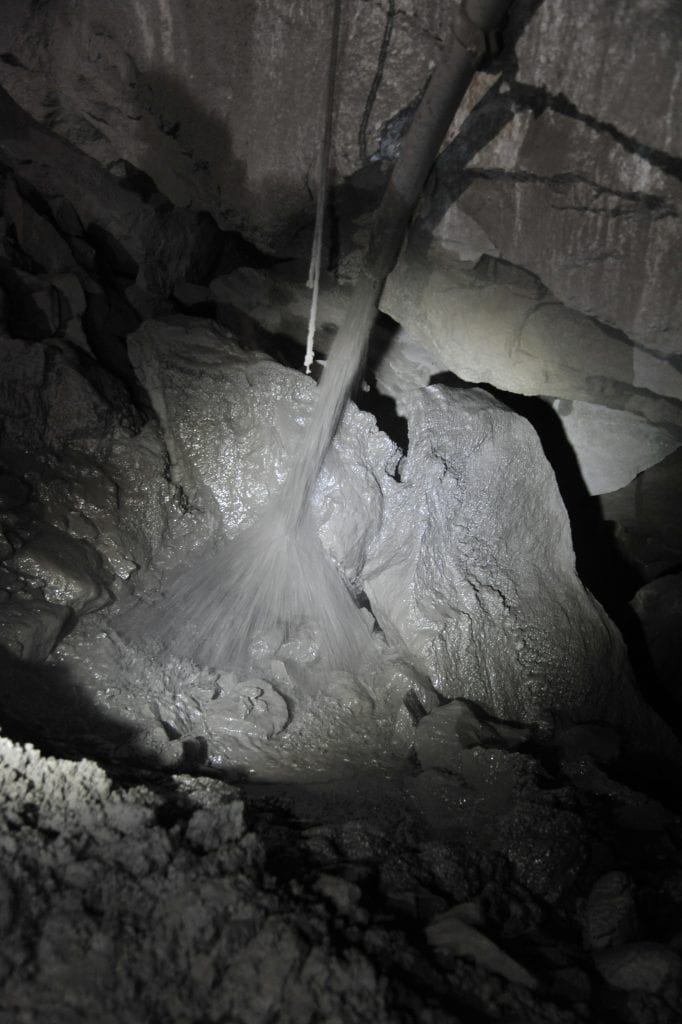For mines where backfilling is possible – and especially for mines that have selected paste backfilling as their backfill method of choice – implementing a continuous pour methodology substantially improves underground mining efficiency. Achieving the elusive continuous pour allows mines to reduce stope cycle times and to simplify logistics – huge contributors to cost savings and productivity improvements for any underground operation.
Barricade failures, however, are a real risk for paste backfill operations, and the risk factors for barricade failures increase dramatically when backfill is continuously poured. To ensure safety during the backfill process, it is critically important to first implement a program of tests where barricade pressures are monitored (during the mine’s standard backfill process) to determine whether the barricade design provides sufficient strength to support a continuous pour process.

There are numerous factors that control barricade pressures during backfilling. Rise rate is controlled by stope geometry and plant output. The strength gain that causes the transition from hydrostatic to non-hydrostatic loading is affected by binder type, binder content, as well as paste rheology and material properties. Any mine entertaining the idea of moving to a continuous pour needs to understand these site-specific characteristics to assess the impact of these factors on barricade stability.
Following review of data from these baseline tests, the feasibility of progressing to a continuous pour trial can be evaluated. This would feature enhanced safety measures such as personnel exclusion zones and catchment berms. The intention of the trial is to attempt to pour continuously and only stop the pour in the event where barricade pressure data indicates pressures have exceeded pre-defined pressure limits.
Even once it is established that a continuous pour is possible, an ongoing monitoring program remains critical to ensure important data from specialized instruments can be reported for real-time management of structural integrity and safety. A reliable barricade and backfill monitoring program to manage the safety of the process requires instrumenting the stope itself, as well as the barricade, with instruments to measure pore pressures and total surface pressures – connected to a real-time data telemetry solution and central server.
All three phases of the program – (1) Baseline Testing, (2) Continuous Pour Trial and (3) Routine Barricade Monitoring – are easy enough to implement with the right tools. The experts at Ramjack Technology Solutions and our specialist technology partners are ready to assist your mine in achieving the elusive continuous pour through real-time backfill monitoring. We can support with expert advice, provision of the necessary instruments and technology, as well as the resources required to perform the required monitoring throughout all three phases.
If your mine is interested in introducing a continuous pour backfill methodology, let Ramjack Technology Solutions help ensure you do it safely. For more details on how we can assist, please

